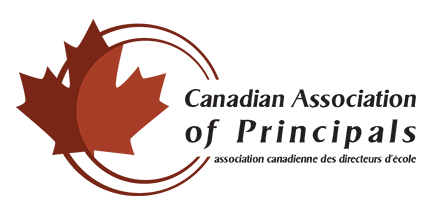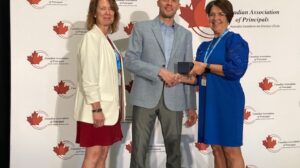The instructional leadership landscape has historically been hectic and evolving. The Covid-19 pandemic further morphed this environment to unprecedented degrees. Evidence points to how the pandemic has not only impacted Canadian students and families (LaBonte et al., 2021; Whitley et al., 2021) but intensified work and wellbeing issues for educators across the country, including teachers and school leaders (Canadian Teachers’ Federation, 2020; 2022; Osmond-Johnson et al., 2020; Pollock & Dwyer, 2021). At the same time, a recurring theme amplified in the pandemic is social justice. Black and Indigenous students and citizens, for instance, fare worse in the pandemic than their white peers relative to education and health (Centers for Disease Control & Prevention, 2022; Osmond-Johnson et al., 2020). This is an important theme to highlight because it signifies that entrenched historical and systemic inequities continue to hinder some Canadians on account of social constructs such as class, race, gender, religion, and sexuality. Therefore, the challenge before instructional leaders such as principal teachers is centering social justice while meeting accountability mandates and attending to wellbeing in a fast-paced and changing educational climate. This is no easy feat as school leaders are notorious for prioritizing others and sidelining their own wellbeing (Markin & Wang, 2020; Osmond-Johnson & Furhmann, 2022; Walker, 2019) and often are conflicted between their moral convictions and bureaucratic directives (Pollock & Winton, 2016; Stelmach & O’Connor, 2019). To navigate this environment more effectively through and beyond the pandemic, principal teachers in Canada must become nimble, social justice-oriented school leaders.
What is Nimble Social Justice Leadership?
The terms nimble leadership and social justice leadership are not new. The former has primarily been advanced in the field of business (Ancona et al., 2019; Somers, 2021; Spaddock, 2014) though core tenets have been adapted and applied in education (Fullan, 2014; Fullan & Quinn, 2016; Owens & Valesky, 2022). Social justice leadership, sometimes phrased as leadership for social justice, has been the focus of educational scholarship (Angelle et al., 2016; Bogotch, 2021; Gélinas-Proulx & Shields, 2021; Ryan, 2010). I interweave both terms here to articulate a deliberate approach and mindset to leading schools through and beyond the pandemic towards the realization of a more socially just, equitable, and inclusive Canada. Nimble leadership describes the “sustained ability” of organizational leaders to “quickly and effectively respond to the demands of change while delivering high performance” (Spaddock, 2014, citing Connor, 1998, p. 1). This speaks to a level of cognitive agility in principal teachers to forecast shifts in the learning environment and adapt to deliver high quality, culturally responsive instructional leadership. A social justice leader, according to Angelle et al. (2016), “is someone for whom the relentless pursuit of greater equity in educational access, opportunity and outcome is a defining principle of their work” (p. 97). Principal teachers who harness nimble, social justice-oriented leadership, then, are concerned with being adaptive and agile in leading instruction that eradicates institutional barriers and sets high expectations for all students, despite and against external and internal pressures that may frustrate this goal. Four qualities of nimble, social justice-oriented principal teachers are examined below.
Nimble, social justice-oriented principal teachers are strategic. Strategic school leaders articulate a vision for part of or the whole organization, influence others to support and work towards this vision, allocate resources to support this vision, and possess a strong sense of self-efficacy and initiative in working towards this vision (Fullan, 2014; Leithwood et al., 2008). Principal teachers working to support social justice in their schools must harness these skills, working to align school vision and instruction with a strong social justice mandate and undertaking purposeful actions to realize this goal. Nimble, social justice-oriented principal teachers are therefore forecasters who understand goal setting and purpose-driven actions and influence others to act in the advancement of set goals.
Nimble, social justice-oriented principal teachers build teams. They understand that instructional leadership is a collaborative undertaking and that navigating complex and fast-paced school reform demands teamwork. In this context, principal teachers must reject the myth of the stoic, heroic school leader and instead work to meaningfully include and empower teachers to lead. More specifically, social justice school leaders mentor teachers through collaboration, professional learning and development, and distributed models of instructional leadership to play both supportive and leading roles in instruction (Allan, 2007; Bogotch, 2021; Roache & Marshall, 2022). As Angelle et al. (2016) and Ryan (2010) allude, social justice leadership is simultaneously exhausting and brave work. The strategic social justice-oriented principal teacher therefore builds social justice networks, including through coaching and mentoring, understanding the importance of having other social justice-oriented teachers on board if social justice outcomes are to be realized.
Nimble, social justice-oriented principal teachers attend to their wellbeing. Even though there is a positive correlation between the wellbeing of employees and their job performance (Demerouti et al., 2001; Keon & Roan, 2016), educators continue to ignore their wellbeing to their peril (Markin & Wang, 2020; Walker, 2019; Wang & Pollock, 2020). The Covid-19 pandemic intensified school leaders’ stress and burnout to disturbing levels (Canadian Teachers’ Federation, 2022; Osmond-Johnson & Furhmann, 2022; Pollock & Dwyer, 2021). To help operate at full capacity as nimble, social justice-oriented principal teachers, these instructional leaders must tap into a range of resources, including physical and emotional supports, to fulfill their work. Schools across Canada continue to be impacted by positive Covid-19 cases and other respiratory illnesses that drive student absences and teacher shortages (Macintosh, 2022; Pagano, 2022; Short, 2022; Smith, 2022). Given an uncertain future and the workload and wellbeing issues plaguing school leaders even before the pandemic, it is imperative that principal teachers are physically, psychologically, and emotionally well to undertake and sustain their work.
Nimble, social justice-oriented principal teachers access ongoing professional learning and development. They do so to build their knowledge and capacity as nimble school leaders and social justice instructional leaders. In the hectic and changing context of the Canadian instructional leadership landscape, principal teachers must have not only a solid understanding of the foundations of systems theory and the complexities of leading in human organizations such as schools (Owens & Valesky, 2022), but keep abreast of the latest issues and developments in the field to inform their work in local contexts (Fullan, 2014; Owens & Valesky, 2022). Eradicating educational barriers and setting high expectations for all students against prevailing and deeply entrenched oppression is a challenging corollary of contemporary education. However, this is the work before principal teachers committed to social justice. It is therefore important that these leaders develop knowledge of and capacity to employ social justice vision and action in their buildings. Ongoing professional learning and development in the areas of anti-oppression, culturally responsive leadership, decolonizing education, and critical pedagogy, for example, can help principal teachers build knowledge around language and actions that support social justice. Bogotch (2021) situates such ongoing professional learning as central to leadership for social justice, asserting that “we educators have to be more political, more critical in analysing our own terminology, concepts and actions inside the contexts of professional development, professional learning, and professional growth…. We must ‘see ourselves’ in the problems of others who are different” (p. 193). This is particularly important for white principal teachers for whom discussions of bias, privilege, and whiteness can be uncomfortable (Sensoy & DiAngelo, 2017). Professional learning and development therefore prepares school leaders including principal teachers with what Angelle et al. (2016) refer to as the attitude, latitude, and aptitude to enact social justice.
Conclusion
To be a nimble, social justice-oriented principal teacher in the current fast-paced context of instructional leadership in Canada is to be agile and adaptive in leading instruction to advance equal access, opportunity, and outcomes for all students. Nimble, social justice-oriented principal teachers can support their work by being strategic and visionary, building teams and a collaborative culture in their schools, attending to their physical and emotional wellbeing, and accessing ongoing professional learning and development supports.
ReferencesAllan, P. (2007). The benefits and impacts of a coaching and mentoring programme for teaching staff in secondary schools. International Journal of Evidence Based Coaching and Mentoring, 5(2), 12-21.
Angelle, P., Morrison, M., & Stevenson, H. (2016). “Doing” social justice leadership: Connecting the macro- and microcontexts of schooling. In J. Ryan and A. Armstrong’s (Eds.), Working (with/out) the system: Educational leadership, micropolitics, and Social Justice (pp. 95-117). Information Age.
Ancona, B., Backman, E., & Isaacs, K. (2019, July-August). Leadership: Nimble leadership. Harvard Business Review, From the Magazine. https://hbr.org/2019/07/nimble-leadership
Bogotch, I. (2021) Afterword: inserting social justice into professional development, Professional Development in Education, 47(1), 191-196. https://doi.org/10.1080/19415257.2020.1848490
Canadian Teachers’ Federation. (2022). But at what cost. Teacher mental health during Covid 19, (Pandemic Research report). https://adobe.ly/3s5mmnL
Centers for Disease Control & Prevention (2022). COVID, Race, & Ethnicity https://www.cdc.gov/coronavirus/2019-ncov/covid-data/investigations-discovery/hospitalization-death-by-race-ethnicity.html
Demerouti, E., Bakker, A.B., Nachreiner, F. and Schaufeli, W.B. (2001), “The job demands-resources model of burnout”. Journal of Applied Psychology, 86, 499-512.
Fullan, M. (2014). The principal: Three keys to maximizing impact. Jossey-Bass.
Fullan, M., & Quinn, J. (2016). Coherence making: How leaders cultivate the pathway for school and system change with a shared process. School Administrator, 30-34.
Gélinas-Proulx, A., & C. M. Shields, C. M. (Eds.) (2022). Leading for equity and social justice. University of Toronto.
Keogh, M., & Roan, A. (2016). Exploring teachers’ early-retirement decisions: A qualitative study. Work, Aging and Retirement, 2(4), 436–446. doi:10.1093/workar/waw016
LaBonte, R., Barbour, M.K., & Nagle, J., 2021. Pandemic pedagogy in Canada: Lessons from the first 18 months. Canadian eLearning Network. https://bit.ly/3F76XIP
Leithwood, K., Harris, A., & Hopkins, D. (2008). Seven strong claims about successful school leadership. School Leadership and Management, 28(1), 27-43.
MacKinnon, B.J. (December, 2022). Teacher shortage at ‘crisis point’ in anglophone schools, warns head of association. CBC New Brunswick. https://www.cbc.ca/news/canada/new-brunswick/teacher-shortage-absence-crisis-anglophone-schools-new-brunswick-association-connie-keating-1.6671280
Markin, G. & Wang, F. (2020). Stress and burnout are on the rise among Canadian principles and vice-principals. EdCan. Available at https://www.edcan.ca/articles/burnout-principals-and-vice-principals/
Osmond-Johnson, P. & Furhmann, L. (2022). Calm during Crisis: Leading Saskatchewan schools through Covid-19 (Interim report). Saskatchewan Teachers’ Federation. https://www.stf.sk.ca/resource/calm- during-crisis-leading-saskatchewan-schools-through-Covid-19
Osmond-Johnson, P., Lopez, A., & Button, J. (2020, November 20). Centering equity in the Covid-19 era. EdCan. https://www.edcan.ca/articles/centring- equity-in-the-Covid-19-era/
Owens, R. G., & Valesky, T. C. (2022). Organizational behavior in education: Leadership and school reform (12th Ed.). Pearson.
Pagano, P. (November, 2022). Record number of students out sick as Quebec deals with triple illness threat. City News Montreal. https://montreal.citynews.ca/2022/11/18/quebec-students-sick/
Pollock, K., & Dwyer, K. (2021). Research and practice to help guide school leaders during Covid-19. CAP Journal. https://cdnprincipals.com/research-and-practice-to-help-guide-schoolleaders-during-Covid-19/
Pollock, K., & Winton, S. (2016). Juggling multiple accountability systems: How three principals manage these tensions in Ontario, Canada. Educational Assessment, Evaluation and Accountability, 28(4), 323-345.
Roache, D., & Marshall, J. (2022). Transformative educational leadership: Leading for equity and social justice in the 21st century. In A. Gélinas-Proulx and C. M. Shields (Eds.), Leading for equity and social justice (pp. 70-81). University of Toronto.
Ryan, J. (2010). Promoting social justice in schools: Principals’ political strategies. International Journal of Leadership in Education, 13(4), 357-376.
Short, A. (January, 2022). Saskatoon school divisions contend with staff shortages amid omicron wave. The Star Phoenix. https://thestarphoenix.com/news/local-news/saskatoon-school-divisions-contend-with-staff-shortages-amid-omicron-wave
Smith, M. (November, 2022). Sick kids and upswing in school absenteeism concern Alberta parents. Edmonton Journal. https://edmontonjournal.com/news/local-news/sick-kids-and-upswing-in-school-absenteeism-concerns-alberta-parents
Sensoy, Ö., & DiAngelo, R. (2017). Is everyone really equal? An introduction to key concepts in social justice education. Teachers College.
Stelmach, B. & O’Connor, B. (2019). Moral distress among school leaders: An argument for considering them in comprehensive school health programs. CAP Journal, Winter 2019.
Somers, M. (2021). The 3 leadership types in a nimble organization. Ideas Made to Matter, Leadership. MIT Sloan. https://mitsloan.mit.edu/ideas-made-to-matter/3-leadership-types-a-nimble-organization Spaddock, S. (2014). Leading a nimble organization. PA Times Online. https://patimes.org/leading-nimble-organization/
Walker, A. (2019). The impact of principals’ work on their wellbeing. Canadian Journal of Educational Administration and Policy, 190, 57-63.
Wang, F., & Pollock, K. (2020). School principals’ work and well-being in British Columbia: What they say and why it matters. SSHRC. https://www.edu.uwo.ca/faculty-profiles/docs/other/pollock/July%202020%20BC%20Report%20-%20School%20Principals%20Work%20and%20Well-Being%20in%20British%20Columbia.pdf
Whitley, J., Beauchamp, M. H., & Brown, C. (2021). The impact of Covid-19 on the learning and achievement of vulnerable Canadian children and youth. Facets 6, 1693-1713. https://www.facetsjournal.com/doi/10.1139/facets-2021-0096
AUTHOR BIO:
Dr. Donna H. Swapp is an Assistant Professor, Educational Leadership at the Faculty of Education, University of Regina. She researches in the area of school leadership, including the changing nature of school administrators’ work, school leaders’ work and wellbeing, and decolonial, social justice approaches to educational leadership.












